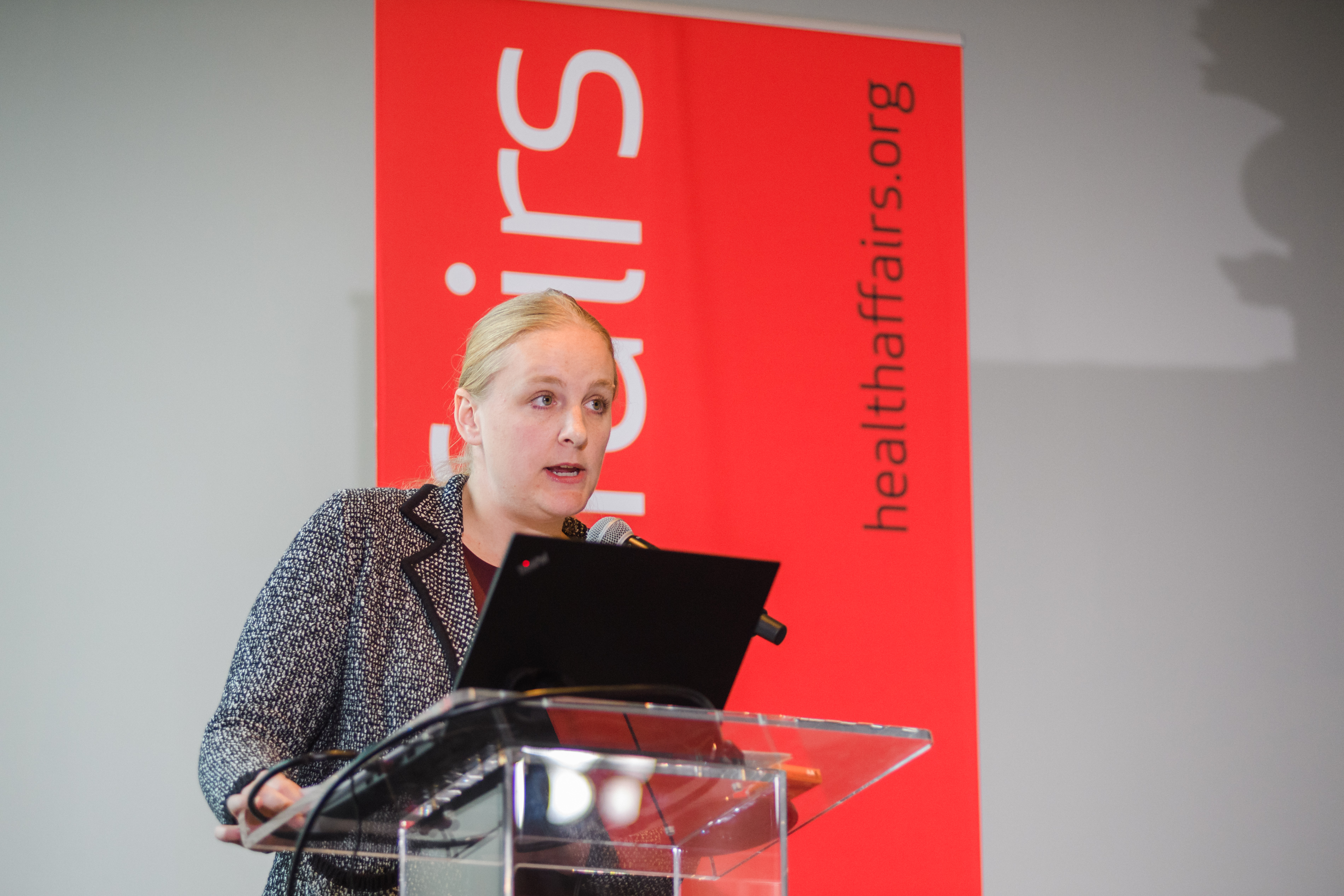
Patient safety is essential in medical treatment, but behavioral health patients haven't benefited from the same systems-wide improvements as patients in other type of care. PhD candidate Morgan Shields recently took a closer look this issue for an article in the November 2018 issue of Health Affairs, "Patient Safety In Inpatient Psychiatry: A Remaining Frontier For Health Policy." In this Q&A, she offers insights into her findings and recommendations:
When we think of patient safety, we rarely consider inpatient psychiatric care settings. What kinds of harm do psychiatric patients face?
Patients within psychiatric facilities can experience harms that are similar to those experienced in other types of hospital care. For example, we know that medication errors are of concern for both psychiatric and non-psychiatric hospital patients. However, patients within psychiatric facilities are also at risk of experiencing other harms, such as those resulting from abuse or restraint and seclusion, as well as psychological harms that can be the consequence of a non-therapeutic milieu, humiliation, depersonalization, or feeling threatened.
How is this different from patient safety in other health care settings?
Patients of psychiatric facilities are arguably in a more vulnerable situation compared to other hospital patients. This vulnerability can be understood in some ways when examining market failures. For example, health plans and providers make decisions on behalf of patients, which occurs in other areas of medicine, but in psychiatric care the courts can also be involved (such as with involuntary admission). These actors are likely not considering patient safety in their decisions on which facilities to admit patients to; therefore, facilities might not see business suffer as a consequence of low-quality service. In addition, psychiatric patients might find self-advocacy difficult due to their condition, power imbalances between the patient and provider, and stigma that can lead to patients’ voices being discredited. Further, families often cannot “be at the bedside” or easily observe the treatment environment and care provided, limiting the extent to which families can advocate.
Despite these heightened vulnerabilities, psychiatric settings have been excluded from efforts to ensure patient safety and quality of care more generally. Our paper describes some concerning gaps in the policy landscape that, if addressed, could better support patient safety within inpatient psychiatry.
Your article specifically points out the need for more data around patient safety in inpatient psychiatric facilities. What kinds of information are you looking for, and why?
While we know from the academic literature and investigative journalism that patients are at risk for experiencing a wide variety of physical and psychological harms, we do not have good estimates on the prevalence of these adverse events and harms given limited data. Inpatient psychiatry is systematically excluded from surveys of hospital utilization and patient experience. We are also limited in our understanding of how adverse events and harms vary across facility types, regions, and groups of patients, as well as the impact of systems-level changes on patient safety. Currently, there is no clearinghouse for such data, which might include information on unexpected death, sexual assault, and physical assaults.
These types of data would support research, which could eventually lead to improvement in care. However, collecting and reporting such information could directly stimulate improvement in safety if used within accountability programs. For example, publicly reporting patient experience data could compel facilities to transform care to be trauma-informed, especially if payers use this information in contractual agreements.
You reference the recent uptick in for-profit inpatient psychiatric facilities in your analysis. How is this related to patient safety?
As I mentioned, our ability to understand how safety might vary across ownership is limited. However, there has been some work looking at this, including my own analysis of complaint data from the Massachusetts Department of Mental Health. These analyses suggest patient safety is worse at for-profits compared to nonprofits. This finding is supported by economic theory. We expect for-profits to exploit the previously mentioned market failures in order to maximize profits to a greater extent than nonprofits. For example, for-profits might employ staff with minimal qualifications and maintain lower staff-patient ratios. Unfortunately, there was a 48% increase in for-profit beds from 2010 to 2016.
Anything else you'd like to add?
There are many barriers to improving patient safety of inpatient psychiatric care. For example, when using patient experience data in accountability programs, we have to understand and address the extent to which perceived coercion would influence patients’ evaluations of care, if these assessments should be conducted at discharge or post-discharge, and what characteristics of the patients should be adjusted for, if any.
However, I believe the central barrier preventing progress is our dehumanizing perception of psychiatric patients and individuals who experience psychological distress. By viewing this population as “less than human” we justify systematic exclusion of this setting and patients from the robust efforts to improve patient safety seen in the rest of health care. Indeed, it is my view that the same dehumanizing perceptions that aggravate market failures (e.g., discrediting the patient voice) are the central factor underpinning the slow progression towards accountability.
